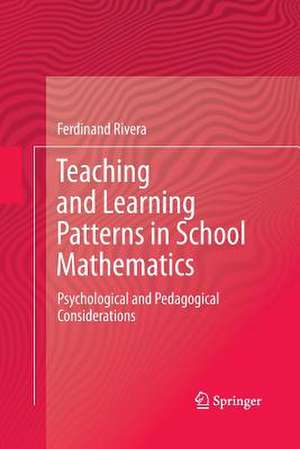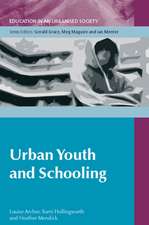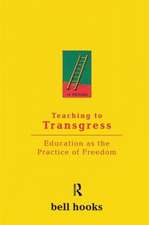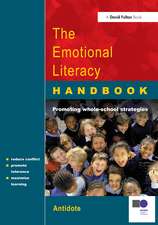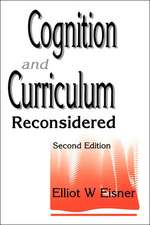Teaching and Learning Patterns in School Mathematics: Psychological and Pedagogical Considerations
Autor Ferdinand Riveraen Limba Engleză Paperback – 19 mai 2015
| Toate formatele și edițiile | Preț | Express |
|---|---|---|
| Paperback (1) | 554.98 lei 38-44 zile | |
| SPRINGER NETHERLANDS – 19 mai 2015 | 554.98 lei 38-44 zile | |
| Hardback (1) | 565.64 lei 38-44 zile | |
| SPRINGER NETHERLANDS – 16 mai 2013 | 565.64 lei 38-44 zile |
Preț: 554.98 lei
Preț vechi: 693.72 lei
-20% Nou
Puncte Express: 832
Preț estimativ în valută:
106.19€ • 115.72$ • 89.49£
106.19€ • 115.72$ • 89.49£
Carte tipărită la comandă
Livrare economică 19-25 aprilie
Preluare comenzi: 021 569.72.76
Specificații
ISBN-13: 9789400794283
ISBN-10: 9400794282
Pagini: 228
Ilustrații: IX, 216 p.
Dimensiuni: 155 x 235 x 12 mm
Greutate: 0.33 kg
Ediția:2013
Editura: SPRINGER NETHERLANDS
Colecția Springer
Locul publicării:Dordrecht, Netherlands
ISBN-10: 9400794282
Pagini: 228
Ilustrații: IX, 216 p.
Dimensiuni: 155 x 235 x 12 mm
Greutate: 0.33 kg
Ediția:2013
Editura: SPRINGER NETHERLANDS
Colecția Springer
Locul publicării:Dordrecht, Netherlands
Public țintă
ResearchCuprins
-1 Introduction. -2 The Context of Generalization. -3 Types and Levels of Pattern Generalization. -4 The Theory of Graded Representations in Pattern Generalization. -5 Gestures, Words, and Incipient Generalizations. -6 Variables and Algebraic Generalizations. - 7 Patterns, Generalization, and Arithmetic Learning. -8 Patterns, Functional Thinking, and Algebraic Learning. -9 Pedagogical Issues and Implications. -10 Conclusions.
Notă biografică
Dr. Rivera is interested in issues involving visualization and algebraic thinking, in particular, generalization. His overall research program at San Jose State University falls under the category of psychology of mathematics education, which involves studying learning and teaching conditions that influence curriculum and instruction. He recently concluded a three-year longitudinal study on pattern generalization at the middle school level. Results of his findings are reported in various peer-reviewed journals, book chapters, and conference proceedings. He has recently published a book, Toward a Visually-Oriented School Mathematics Curriculum, that is a volume in the Springer Mathematics Education Library series. This year, Dr. Rivera will be completing a one-year longitudinal research study in a Grade 2 class. He intends to follow the same kids through Grade 3 during the next school year. Dr. Rivera's research is supported by a Career grant from the National Science Foundation.
Textul de pe ultima copertă
This book draws on research findings on patterns in the last twenty years or so in order to argue for a theory of graded representations in pattern generalization. Pattern generalization encompasses the construction and justification of structures that give meanings to sequences of numerical and figural objects. While empirical studies conducted with different age-level groups have sufficiently demonstrated varying shifts in structural awareness and competence, which influence the eventual shape of an intended generalization, such shifts, however, are not necessarily permanent but parallel and graded, adaptive, and fundamentally distributed among a variety of cognitive and noncognitive sources that mutually influence each other. Thus, the emergence and complexity of the pattern generalization process cannot be reduced to a simple narrative of cognitive shifts from the arithmetic to the algebraic, from the recursive to the functional, from discerning details to perceiving properties, and so on and so forth. In this book, we pursue an alternative view of pattern generalization processing, that is, one that is not about permanent shifts or transition phases but graded and multimodal depending on individual learners’ experiences with patterns and, especially, the manner in which they perceive, think about, and act on them.
A nonlinear graded perspective offers a much more robust and dynamic understanding of the similarities and differences in patterning competence since it is sensitive to, and acknowledges, the varying learning conditions and opportunities that shape generalization processing and representational conversion. Empirical evidence from a variety of sources will be provided to demonstrate this emergent perspective. Further, instructional implications commingle with research knowledge throughout the book, providing researchers andteachers with usable information that will help them cope with issues they may encounter when they use patterns to engage learners in generalization activity, which involves various aspects of abstract, quantitative, model-driven, structural, and regularity thinking.
A nonlinear graded perspective offers a much more robust and dynamic understanding of the similarities and differences in patterning competence since it is sensitive to, and acknowledges, the varying learning conditions and opportunities that shape generalization processing and representational conversion. Empirical evidence from a variety of sources will be provided to demonstrate this emergent perspective. Further, instructional implications commingle with research knowledge throughout the book, providing researchers andteachers with usable information that will help them cope with issues they may encounter when they use patterns to engage learners in generalization activity, which involves various aspects of abstract, quantitative, model-driven, structural, and regularity thinking.
Caracteristici
The only book to advocate a patterns approach to mathematics education as a way of democratizing access to hard-to-reach concepts and processes Provides a synthesis of twenty years of research on the use patterns in mathematics education Includes concrete examples to guide the development of a patterns approach in school mathematics curricula for the K-12 classroom ?
